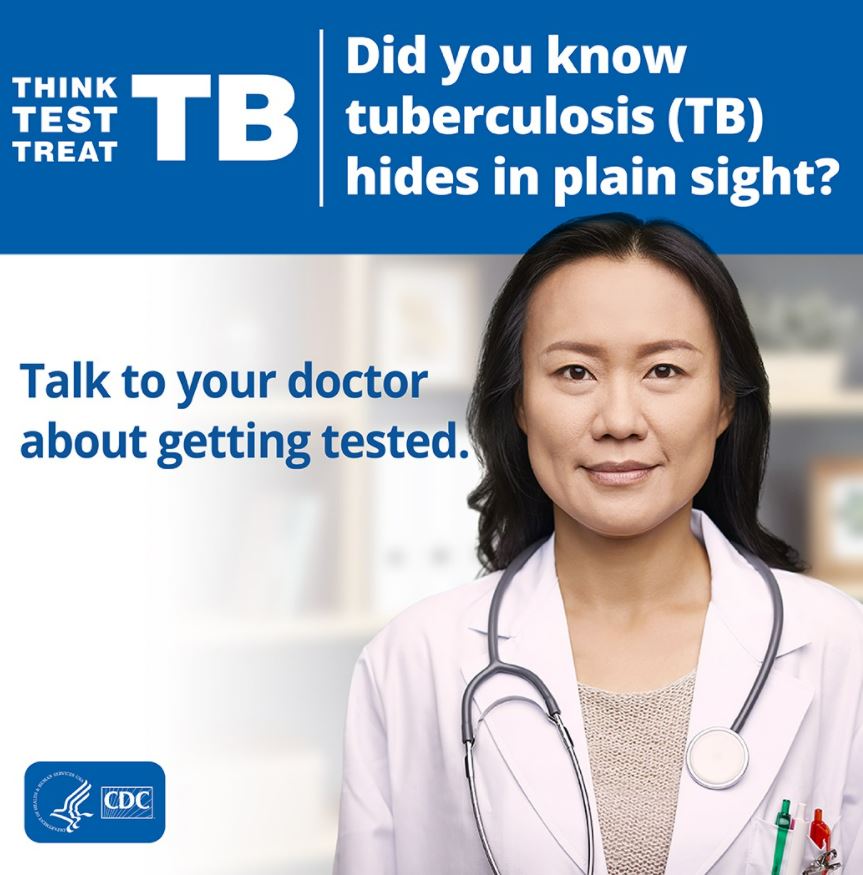Understanding TB can help protect yourself, your family, and your community
Tuberculosis (TB) is a complicated health issue and is often misunderstood. TB can live in your body for years without symptoms. This is called inactive TB or latent TB infection. Inactive TB can become active TB disease at any time and make you sick. It is estimated that up to 13 million people in the United States live with inactive TB, which if left untreated can develop into active TB disease. Learn the facts and ask your healthcare provider about testing for TB infection.
FACT: [S(1] TB germs can remain inactive in a person’s body for years without symptoms and can become active at any time.
When most people think of TB, they think about symptoms like coughing and difficulty breathing. While this is true for active TB disease, people with inactive TB do not have any symptoms and do not “feel” sick. The only way to know for sure if you have inactive TB is to get tested.
If left untreated, 1 in 10 people with inactive TB will get sick with active TB disease, which can spread to others and can be deadly. The risk of developing active TB disease is much higher for people with weakened immune systems or those with diabetes, cancer, and HIV.
FACT[S(2] : TB germs are spread through the air from one person to another.
TB germs are spread through the air when someone with active TB disease coughs, talks, or sings. People nearby may breathe in the TB germs and become infected.
TB is NOT spread by:
• sharing toothbrushes
• saliva from kissing
• shaking someone’s hand
• touching bed linens or toilets
• sharing food, drink, or utensils
TB is most likely to spread to those who have spent time around someone who has active TB disease such as a family member, friend, or colleague.

FACT: [S(1] You can get TB even if you’ve been vaccinated.
One of the common myths is that you are protected from TB if you’ve been given the TB vaccine (also known as bacille Calmette-Guérin or BCG vaccine). But the fact is, the TB vaccine’s protection weakens over time.
If you have received the TB vaccine, tell your healthcare provider, especially if you’re getting tested for TB infection.
FACT:[S(2] Even if you’ve been screened for TB during your immigration process, you could have inactive TB and not know it.
TB is common throughout the world, but if you’re born in Asia, Africa, or Latin America, you have a higher chance of getting infected with TB because it’s more common in these regions. Some people think that because they were screened during their immigration process to the United States, they don’t have TB. However, until 2019, immigration exams only tested for active TB disease. You could have inactive TB and not know it.
More than 80% of people who get sick with active TB disease in the United States each year get sick from untreated inactive TB, which can develop into active TB disease years or even decades later. That’s why it’s important to talk to your healthcare provider about getting tested.
FACT[S(3] : Inactive TB can be treated to prevent active TB disease.
Even though you do not have symptoms with inactive TB, you can develop active TB disease, which is spread from person to person, can make you sick, and can even be fatal if left untreated. Treatment options are available to prevent you and your loved ones from developing active TB disease and getting sick.
If you have inactive TB, completing your treatment is important to prevent active TB disease. Talk to your healthcare provider about your medications, and ask about community resources that can support you in your treatment plan.
CDC recommends that people at risk for TB get tested. If you have inactive TB, treatments are available that can help protect you and your loved ones from getting sick with active TB disease. Talk to your healthcare provider about getting tested.[S(4]
To learn more about TB and how you can protect yourself and others, visit www.cdc.gov/thinktesttreattb[S(5]
 Crossings TV Asian Television – Home to Asian Americans
Crossings TV Asian Television – Home to Asian Americans